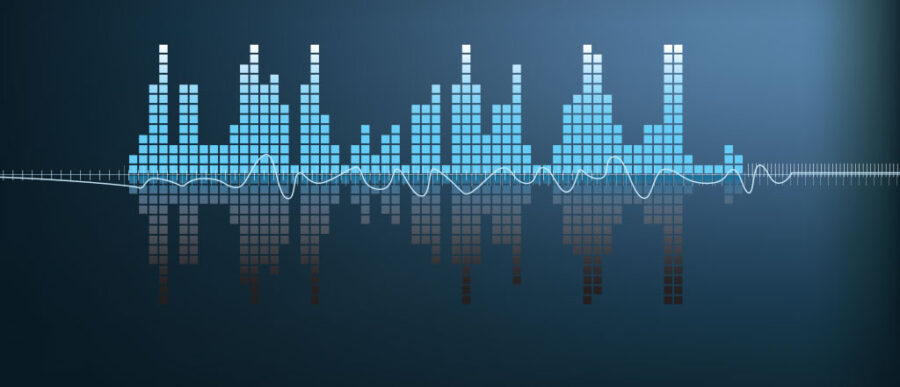The theme music to NBC Nightly News is unmistakable, iconic and powerful.
Written in 1984 by Academy Award-winning composer John Williams, “The Mission Theme” is a lush, full orchestration layering horns, strings and pulsing rhythms into a signature sound that conveys a sense of urgency and seriousness to the broadcast that follows.
Although television viewers only hear a few seconds of the score, which is nearly four minutes long, that little sample is enough.
And that, says author and composer Joel Beckerman, is what the power of sound can do.
Beckerman, who has constructed a career translating music into marketing strategies, ought to know. He’s crafted what he calls “sonic branding” for AT&T, Disney, Mercedes, Southwest Airlines, Coca-Cola, Scion and dozens of other companies and products. In Beckerman’s world, making a memorable melody that can linger in a listener’s mind after just a few notes is a benchmark of marketing success.
His insights and experiences from decades in the field are gathered into a book, written along with Tyler Gray, titled The Sonic Boom: How Sound Transforms the Way We Think, Feel and Buy. It’s an exploration into what makes sound such a vital part of the consumer experience. Beckerman discussed his work recently on the Knowledge at Wharton radio show on SiriusXM channel 111. (Listen to the podcast at the top of this page.)
“The soundtrack of our lives and … all those different moments of sound guide our moods and change our choices.”
“In my career, I’ve worked with so many smart, creative people not only in television, but in marketing and branding. What I started to think about more and more was how sound affects us every single moment of our lives,” Beckerman said. “Really, the soundtrack of our lives and … all those different moments of sound guide our moods and change our choices. It changes our mood in an instant.”
There is an art and a science to composing sound designed to promote a product or company, he noted. In the digital era, where businesses are competing for customers whose attentions are drawn to a million different things in the course of a day, selling sound goes beyond creating a cutesy jingle.In corporate America, branding must be monetized.
Monetizing Music
“Apple proved that if you love a company, you will do business with them,” Beckerman said. “A very, very valuable commodity is your brand— not just for its own sake, but in terms of how it helps you monetize customer relationships. That’s one of the things that sound does, probably more powerfully than anything else, just because it acts on this really primal part of your brain. It gives you these emotional reactions and emotional connections in a matter of just a second.”
Take Chili’s restaurants, for example.A curious thing happens at dinnertime inside a Chili’s, Beckerman said. No one will have ordered fajitas, the restaurant’s signature dish. Then one customer places an order, and the sizzling plate is carried through the dining room to the table. Shortly after that, the kitchen will push out 10 or 15 more orders for fajitas.
“It’s a multi-sensory chain reaction triggered by sound, and then you’re completely helpless,” Beckerman said of the process.
It’s not just the smell of the food — because there’s a symphony of aromas inside any restaurant — but the sound of the sizzle that grabs customers, he added. That same sizzle is used in Chili’s commercials to further emphasize its branding.
There are plenty of other examples of successful sonic branding. Beckerman pointed to the sound of an ice cream truck rolling through a neighborhood in the summertime, the electronic tone at the end of an AT&T commercial or the jazzed up chimes that play every time NBC’s logo is shown on television.
Even when the audience claims to be sick and tired of a hearing a ubiquitous song, the music still works. “The reality is if [the songs] trigger pleasurable feelings, pleasurable memories for you, you actually really love them,” Beckerman said.
Notable Backfires
In recent years, companies have capitalized on this notion by using pop and rock songs in their advertising. But the strategy doesn’t always work. One notable backfire happened with Royal Caribbean Cruises, which used the 1977 Iggy Pop tune, “Lust For Life,” in several television ads in 2005. The song, which is listed among Rolling Stone‘s “Greatest Songs of All Time,” is about drug abuse and prostitution.
Viewers called out the company for its choice, Beckerman said, and the song was quickly yanked.
“Without even realizing it, each of us probably has a couple of dozen boom moments every single day.”
The negative audience reaction highlights the need for authenticity in marketing, according to Beckerman. The modern consumer is savvy and doesn’t want to feel manipulated. Companies are compelled to “tell the truth” in their marketing strategy.
“You can’t just jam a song and a brand together,” Beckerman said. “You have to really have a little depth of understanding of what it’s about. It’s not just… that it’s a cool piece of music or you like the way it sounds or you think, ‘Hey, people love this piece of music, so they’re going to love when my brand is associated with it.’ We’re in a realm now where that thinking has to be much more sophisticated.”
Part of Beckerman’s job involves guiding clients to appropriate choices and helping them understand that companies can use music and sound to develop their relationships with customers. An important component of that is also knowing when to employ silence.
“The problem isn’t that there’s not enough sound. The problem is we are actually overrun by sound,” Beckerman said. “If all you’re doing is kind of yelling at [the audience] all the time, they’re not going to like you very much.”
Sound and music as revenue drivers is one of the main themes in the book, which also looks toward the future of marketing. Consumers will interact with screens less and less as technology becomes more advanced, Beckerman predicted. In that era, sound will become even more paramount as a signal to the brain.
In a short video on the companion website to the book, the notion is summed up like this: “If a picture is worth a thousand words, then the right sound at the right moment might be worth a thousand pictures.”
So, what exactly is this phenomenon that Beckerman calls a boom moment? Simply put, it’s the intersection in which sound or music changes an experience.”Without even realizing it, each of us probably has a couple of dozen boom moments every single day,” he said.



